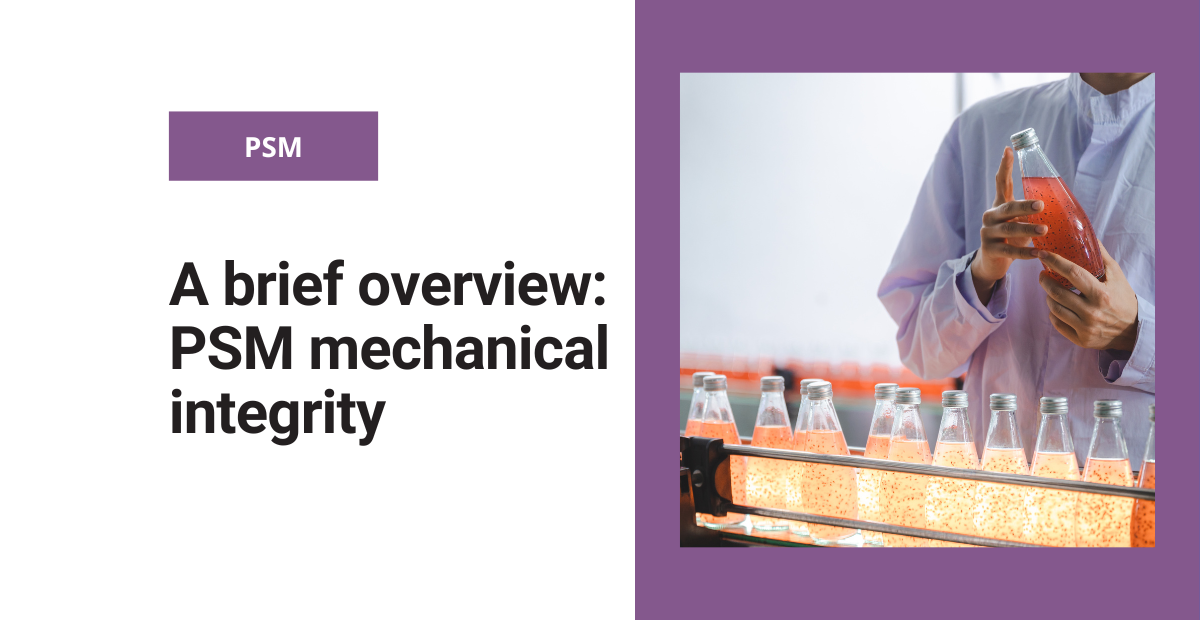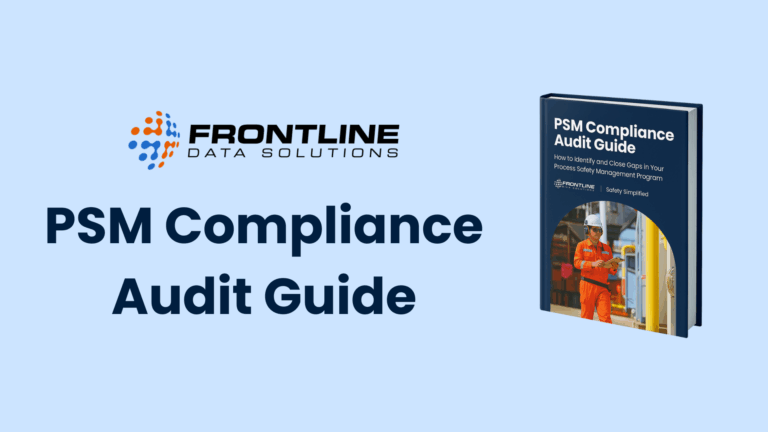OSHA’s process safety management (PSM) standard ensures that companies are responsible for how they handle and dispose of hazardous chemicals. This standard, alongside EPA regulations, guides businesses on the best ways to train their employees and set up their operations.
A major tenet of PSM is mechanical integrity, or the careful management of process equipment to ensure its overall safety and longevity. Under PSM guidelines, companies must establish clear procedures for the maintenance of process equipment.
PSM Compliance Audit Guide
Download this guide to review your program’s compliance with each line of the OSHA PSM standard.
Best practices to follow
While oversight of the mechanical integrity program falls to site leadership, that doesn’t mean workers shouldn’t be involved. In fact, you could easily argue that workers’ involvement is essential to the success of your procedures.
One best practice is to train all workers on how to:
- Notice signs of equipment overuse
- Identify mechanical issues with their tools and equipment
- Stop the machinery if it poses an immediate issue
- Inform management of potential threats to the integrity of the equipment
It’s also very important to create a preventative maintenance program for all equipment that impacts workers’ safety. You should implement a regular schedule for quality checks and have a standard process for scheduling equipment repairs. This also includes having a red tag system in place to take unsafe and damaged machinery out of service.
When it comes to process equipment inspections, the frequency and cadence should conform to the manufacturers’ recommendations and good engineering practices.
[Download our PSM Mechanical Integrity form to get an idea of what to document.]
Equipment that falls under PSM mechanical integrity
Under the PSM standard, mechanical integrity requirements apply to the following equipment:
- Pressure vessels and storage tanks
- Piping systems (including piping components such as valves)
- Relief and vent systems and devices
- Emergency shutdown systems
- Controls (including monitoring devices and sensors, alarms, and interlocks)
- Pumps
Additionally, each inspection and test on process equipment must include the following information:
- Inspection date
- Name of the inspector
- Equipment serial number or another identifier
- Inspection description and results
If the equipment deficiencies fall outside acceptable limits as defined by the process safety information, you must correct them before putting the equipment back into service.
And these rules still apply when you’re opening a new plant or introducing new equipment. You must inspect all machinery that falls under PSM, regardless of how old it is. As part of this evaluation, you also need to determine that the equipment is suitable for the process application for which it will be used.
A crucial aspect of new equipment inspections is ensuring that they’ve been properly installed. This means looking at bearings, mounts, railings, etc. that accompany the equipment as well. For more information on this mechanical integrity element, check out our PSM guide.





